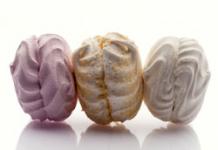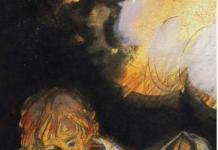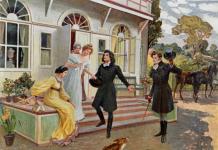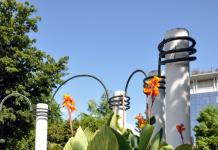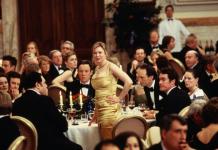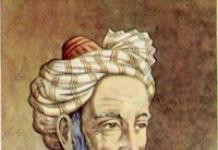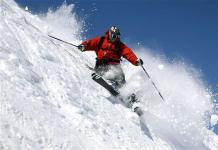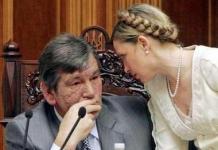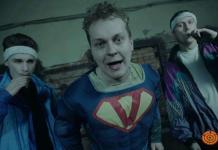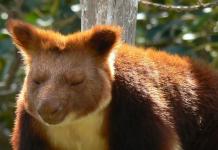The ability to run quickly and deftly is necessary in the main activity of the child - the game. Running is more often than other movements used in everyday life by all children, regardless of whether they visit a child care institution or play on playgrounds in the yards. Running is included in the content of many types of movements: the ability to run correctly depends, for example, on the success of high jumps and long jumps, the performance of sports exercises that include elements of badminton, volleyball, and basketball games. Running is the basis of the TRP complex. In recent years, recreational running has become widespread among all segments of the population.
Like walking, running is an exercise of a cyclic type, in which repulsion from the support with the foot (right or left) alternates with flight. This is hallmark running versus walking. In running, as in walking, good coordination of movements of the arms and legs, correct posture, and expedient, depending on the type of run, placing the foot on a support are necessary. Multiple repetition of individual cycles (push, flight and landing) allows you to run for a long time without experiencing overstrain, developing endurance. External ease of running is associated with the presence of optimal effort with perfect coordination of movements. One of the main points that provide good results (high speed or duration of running) is the rhythm of running. Running on the ground, associated with uneven ground, sharp turns, ascents and descents, loses its cyclical and rhythmic nature, characteristic of running in the gym or on a special track. Such a run requires the ability to rebuild the coordination of movements well and quickly.
Preschool children should be taught to run quickly, easily and rhythmically, with good hand-foot coordination. Children should be able to use the most appropriate type and technique of running, depending on the specific conditions. So, on an uneven surface, running at a slow pace while maintaining balance is more effective; uphill - with a small step, downhill - with a wide step, in games with catching and dodging - running at a variable pace, with turns, unexpected stops?
In their daily activities and games, children most often use running on slightly bent legs at an average pace with a change in direction. But it is necessary to teach children other types of running (at speed, at a slow pace, running with knees high), which are important for comprehensive physical education, the development of motor qualities, such as agility, speed, endurance.
Running as a new type of motor action appears in children in the second year of life after they learn to walk confidently. At first it is just accelerated walking with frequent and small steps. The body at the same time strongly leans forward, the legs are bent at the knees. It looks like the child is falling. At the beginning of the third year of a child's life, this peculiar accelerated walking becomes actually a run, its characteristic feature appears - flight, although the steps are still mincing, uneven, and the foot is placed on the surface heavily, with the whole foot at once - “slaps”. Hand movements are not always consistent with leg movements.
For a period of 2 to 7 years, running in children becomes easy, rhythmic, flight is well expressed in it, movements of the arms and legs are coordinated. The foot is placed with an elastic roll from heel to toe. Children are already able to perform different types running, using his various techniques. For example, in a short segment, when asked to run fast, they perform an energetic run on toes, with active hand movements. When running for a long distance, they run at a calm pace, putting their foot in a roll from heel to toe, hand movements are slightly relaxed.
In order for children to gradually improve different types of running, it is necessary to create appropriate conditions for them.
Run training methodology.
When teaching young children to run, the example of the educator is of great importance. Therefore, in exercises and games, the teacher performs the task together with the children, drawing their attention to the ease of running, coordination of movements. At the same time, he uses a game image, for example, run like mice.
When performing such imitative actions, it is not always necessary to show movements, but the teacher must be sure that the children understand and are familiar with the image proposed for imitation. Do not give children a lot of sometimes incomprehensible instructions, such as "raise your legs higher" or "move your arms harder."
Often this leads to the opposite result: the children begin to stomp, the run becomes heavy, abrupt, and the already emerging coordination of the movements of the arms and legs goes wrong. In order to keep kids interested in learning, it is advisable to offer game tasks more often - run to a toy, run up to a tree or stone, play outdoor games with running: “Sparrows and a car”, “Cat and mice”, etc.
In the future, when teaching older children to run, the teacher shows less himself, explains more, pays attention to those who run well (runs easily, rhythmically, correctly observing the running technique) and can serve as an example.
In order not to decrease interest in running, children of older groups should be offered Additional tasks: change the pace or direction of running, quickly stop and continue running again, run around objects, alternate running with other movements - walking, climbing, jumping, etc.
Running with the introduction of additional tasks is most often carried out in such exercises as “Catch up with the ball”, “On the bridge”, “For high, for low”, “Stork, butterfly, frog”, “Run - do not drop”. The content of many of them includes running with catching and dodging, which affects the improvement of coordination of movements, running speed, and the development of dexterity.
To develop endurance, running at a uniform slow pace is useful. It is used with children of all age groups. For children of the first and second junior groups, the duration of the run is 30-60 s, for children of the older groups, the duration of the run increases to 2-3 minutes. This type of running is used in exercises and games with pronounced continuous motor activity. It is advisable to use a long slow run in the air, including it in the games "Pilots", "Cosmonauts", etc., and alternating with overcoming some obstacles (walk along a log, crawl under a rope, run up a hill and escape from it).
Types of running.
There are different types of running. In sports practice, running is divided depending on the length of the distance: sprint (60-100 m), middle-distance running (400-1000 m), long-distance running (from 2000 m), marathon running. In addition, there are cross-country running, obstacle running, and hurdling. In recent years, running at a low pace (jogging), which is used for recreational purposes, has gained particular popularity.
Considering age features, the following types of running are available to preschool children: regular running at a calm pace, running at speed, with obstacles and the inclusion of other movements (climbing, jumping), running with a changing pace, slow running. Types of running and running exercises differ in execution technique. The educator should know these features in order to prevent mistakes, to correct them easier and faster, to correctly determine the tasks and teaching methods.
Regular run. Correct technique Such a run is considered: the ability to run freely, easily, with natural hand movements. The arms are bent at the elbows, the fingers are freely bent (but not clenched into fists). When running, the arms move forward and upward approximately to the level of the chest somewhat inward, then they are retracted with the elbows back - to the sides. When running in small steps, the leg slightly bent at the knee is placed on the front of the foot. With wider running steps, the leg is placed from the heel, followed by an elastic lowering to the entire foot. When pushing off, you need to straighten your leg at the knee. The toes of the feet are not bred to the sides. The torso is slightly tilted forward, the head is in line with it, the chest and shoulders are deployed, do not turn the shoulders following the hand, so as not to cause excessive rotation of the torso.
Normal running at an average pace is widely used to teach certain elements of technology, the skills of correct coordinated movement. With such a run, children can better control their movements, feel them well, and can make adjustments to their actions.
Normal running can be carried out in various formations: in a column one at a time, in pairs, in a circle, in a “snake”, etc. The approximate duration of continuous running increases gradually from 10-15 s in the younger groups to 35-40 s in the older ones (repeated 2 -4 times with breaks). For children 6-7 years old at the end of the school year, the duration of the run can be within one minute, since during the year children master the elements of the correct running technique, their functional training grows.
Sock running. The foot should be placed on the front of the foot, without touching the heel of the floor. The step is short, the pace is fast. The movements of the hands are calm, relaxed, in time with the steps, do not raise them high, You can put your hands on your belt.
Running with high knees. Run lifting the leg bent at the knee at a right angle, put it on the floor with a soft, elastic and at the same time quite energetic movement on the front of the foot. The step is short, with a slight advance forward. The body is straight and slightly tilted back, the head is held high. Hands can be placed on the belt. Alternate with regular running or walking.
Run with a wide stride. Take wide steps, increasing the push and flight time (as if jumping over an imaginary obstacle). Put the foot from the heel with a roll over the entire foot. Try to fully straighten the pushing leg, vigorously pushing off. Hand movements are free and sweeping.
Running with the leg bent at the knee back. The torso is tilted forward a little more than usual, hands on the belt. The leg bent at the knee after the push is retracted (try to reach the buttock with the heel). Alternate with regular running, while relaxing your legs a little more, giving them rest. Walking with a cross step. Perform with an overlap of almost straight legs: right - to the left, left - to the right. The leg is placed on the foot.
Jumping run. It is performed energetically, with a wide sweeping movement. Push forward and up.
The duration of continuous running on toes, with high raising of the knees, with the leg bent at the knee pulled back, is short (10-20 s). As a rule, these types of running are repeated 2-3 times, alternating each type with regular running or walking. Running with a wide step is given at a distance of 10-12 m. For this run, you can use various landmarks - lines, cords, flat hoops, stuffed balls.
Running at a fast pace. It is performed on the forefoot or on socks. The step is wide, swift. Hand movements are active, in time with running steps. Do energetic repulsions with a push leg, straightening it well. Move the fly leg forward and upward. The body is tilted forward in the direction of movement, the head is in line with it. Shoulders deployed, not tense, look forward. Fast running is most often used in games with competitive elements. The duration of such a run is small - 5-8 s. However, alternating with natural stops - rest, it can be repeated 4-5 times.
Slow running has recently gained great popularity, mainly as a means of developing general endurance, increasing the functionality of the body. In this run, one must be able to maintain a low pace, not speed it up or slow it down, run rhythmically. Take short steps, put your foot on the front of the foot or elastically from heel to toe. The movements of the hands are calm, the arms are bent at the elbows at waist level, the shoulders are slightly relaxed.
Variable pace running is used in combination with other movements. The main task in teaching this type of run is to teach children to choose the pace and type of run that best matches the content of the task. So, if the run ends with a jump or a long jump, then you do not need to slow down the pace before the push, but immediately move from the last step of the run to an energetic push up or forward. You must be able to quickly and deftly switch from running to another type of movement. For example, crawl under a hoop or rope, walk along a log, and then continue running without stopping, without changing direction. At a variable pace, you can offer different exercises.
Shuttle run. A wide, brisk stride alternates with a sharp stop at the end when moving in a straight line and frequent strides when cornering. Before changing direction, the pace is more frequent, the steps are shorter, the knees are more bent to maintain balance. Hand movements are natural, helping to move in a straight line and around corners.
Running combined with crawling under sticks, climbing into a hoop, jumping over, jumping up. Here you need to be able to slow down and speed up the pace of running before overcoming an obstacle.
Running in different natural conditions develops the ability to apply the type of running that best suits these conditions, its pace and speed. Running on a winding track is different from running in a straight line, and running on sand requires a different technique and different effort than running on a dirt track. By changing the conditions familiar to children, choosing different combinations of them, it is necessary to promote the development of a skill that is so necessary in life - to use the most effective type of running in accordance with surface conditions (dirt, grassy, asphalt track, running on sand, water, uphill and downhill) .
When running uphill, the foot is placed on the toe, the step is short, the body is tilted forward. When running, the leg is placed on the entire foot or from heel to toe, the legs are more bent at the knees, the body is slightly tilted back.
When running up and down the board, laid at an angle, the feet are placed close to each other, the socks are not spread apart, the balance is maintained by hand movements.
E.N. Vavilova, "Teach to run, jump, climb, throw", M., 1983
|
Age |
Features of the movement of children |
Software Requirements |
Pedagogical requirements in teaching movement |
|
Junior preschool age |
Toddlers still cannot push off well from the ground, the floor, they run hard, their step is small, coordination of movements is not well developed for everyone. Collective running is difficult for children |
Teaching children to run easily by waving their arms naturally Teaching children to run in a certain direction |
Pay attention to the posture of children while running. The duration of the run in the younger groups is 30 - 40 s. Running should be alternated with other movements, as children get tired quickly. Pay attention to the ease of running, coordination of movements. It is advisable to teach running in small groups. Combine running with rest. Each child runs at their own pace, trying not to bump into others - when running in a flock in the indicated direction |
|
Middle preschool age |
Difficulty running in a group. Some kids still step on the whole foot |
Teaching children to run easily by waving their arms naturally Teaching children to run in a certain direction Teach children to use the entire space of a room or playground Exercise in running with stops at the signal of the teacher, with a turn |
Pay special attention to the naturalness, ease of running, energetic repulsion, elastic foot placement, the ability to perform different types of running. As you master running, the requirements for its technique increase. |
|
senior preschool age |
Relatively high level of coordination of movements, which makes it possible to perform complex exercises |
Cultivate endurance, agility, attention Build the habit of daily exercise |
Additional tasks are offered: change the pace or direction of running, quickly stop and continue running again, run around objects, alternate running with other types of movements - walking, jumping, etc. Get the right running technique. The duration of the run is 2 - 3 minutes. The running distance is increased. Children compete in running at speed (20 - 30 m). Running becomes longer at a slow pace (1.5 - 2 minutes) |
Preschool children need learn to run quickly, easily and rhythmically, with good hand and foot coordination. Children should be able to use the most appropriate form And running technique depending on specific conditions. So, on an uneven surface, running at a slow pace while maintaining balance is more effective; uphill - with a small step, from the mountain - with a wide step, in games with catching and dodging - running at a variable pace, with turns, unexpected stops.
In their daily activities and games, children most often use running on slightly bent legs at an average pace with a change in direction. But it is necessary to teach children other types of running (at speed, at a slow pace, running with knees high), which are important for comprehensive physical education, the development of motor qualities, such as agility, speed, endurance.
Run as a new type of motor actions appears in children in the 2nd year of life after they learn to walk confidently. At first it's simple accelerated walking with frequent and small steps. The body at the same time strongly leans forward, the legs are bent at the knees. It looks like the child is falling.
At the beginning of the 3rd year of life child, this peculiar accelerated walking becomes actually running, its characteristic feature appears - flight, though the steps are still mincing, uneven, A leg placed on the surface hard, with the whole foot at once - “slaps”. Hand movements do not always agree With leg movements.
By 4 years under the influence of exercise, the child improves hand and foot coordination while running, are being improved flight, rhythm. However, the length of the step is still insufficient, so he is given exercises in running through sticks laid on the floor, mugs, hoops, and they also use running with dodging and catching.
At 5 years old child master the technique of running, Although in details he fails to achieve sufficient clarity. When teaching running, the teacher pays attention to the improvement of details, ease and speed of running.
At 6 years old children master the running technique available to them. run easily, rhythmically, evenly, with good coordination of movements, observance of the direction.
During the period from 2 to 7 years running in children becomes light, rhythmic, the flight is well expressed in it, the movements of the arms and legs are coordinated. The foot is placed elastic roll from heel to toe. Children are already able to perform different types of running, using different techniques. For example, in a short segment, when asked to run fast, they perform an energetic run on toes, with active hand movements. When running for a long distance, they run at a calm pace, putting their foot in a roll from heel to toe, hand movements are slightly relaxed.
In order for children to gradually improve different types of running, it is necessary to create appropriate conditions for them.
To the children JUNIOR GROUPS got used to the team better, learned to use free space, it is advisable to start running training with small groups. At the beginning, they run as they want, it is especially interesting for them to run with ribbons, to carry cars, wheelchairs, strollers. Such a run alternates with stops. Kids, on their own initiative, squat, walk, run again. It turns out, as it were, natural breaks for rest in the run. The teacher watches the children, as necessary, offers, for example, a sedentary child to run to a tree, with a bright handkerchief in his hands, and a child who runs for a long time with a car, load it with sand, small pebbles, leaves.
The easiest task- run in a flock in the indicated direction, after the teacher, to the toy, chair. The running of one child in this case has little to do with the running of other children. Everyone runs at their own pace, keeping the direction of the run, trying not to bump into each other.
Running in a column, in a circle, in pairs requires everyone to be able to balance their movements with the running of other children, not to overtake the one running ahead. These types of running are mastered gradually, starting with small subgroups. The teacher himself actively acts, runs ahead of the children, dragging them along. It offers interesting game tasks such as: “Run to the tree”, “Run around the stump”, etc. Running in a column is more often used in morning exercises, physical education classes. Running in a flock, running in a circle are the content of many outdoor and round dance games.
When teaching young children to run, it is important teacher example. Therefore, in exercises and games the teacher does the task with the children drawing their attention to ease of running, coordination of movements. In doing so, it uses game image, for example, run like mice. When performing such imitative actions, it is not always necessary to show movements, but the teacher must be sure that the children understand and are familiar with the image proposed for imitation.
Do not give children a lot of sometimes incomprehensible instructions, such as "raise your legs higher" or "move your arms harder." Often this leads to the opposite result: the children begin to stomp, the run becomes heavy, abrupt, and the already emerging coordination of the movements of the arms and legs goes wrong. To keep kids interested in learning, it is advisable more often offer game tasks- run to a toy, run up to a tree or a stone, play outdoor games with a run: “Sparrows and a car”, “Cat and mice”, etc.
In the future, when learning to run older children the teacher is already shows less himself, explains more, draws attention to those who run well(runs easily, rhythmically, correctly observing the running technique) and can serve as an example.
IN THE MIDDLE GROUP increase as you learn to run requirements for his technique. The teacher should pay special attention to the naturalness and ease of running, energetic repulsion, elastic foot placement, and the ability to perform different types of running. For example, when accelerating the pace, take more frequent steps, work more energetically with your hands; when moving to a slow pace, steps are less frequent, hand movements are calmer.
Running at speed children should quickly start moving on a signal, run energetically, purposefully, look ahead without being distracted. The teacher makes sure that when running, the children put their feet closer to one another, do not spread their toes to the sides. To this end, he proposes to run along a narrow path, a board 30-20 cm wide.
While running in a column tasks also become more difficult: to run around the objects placed in a row by turning to the right and left, without running far away from the objects. It should be recalled that in this run the legs are slightly bent at the knees, the leg is placed on the front of the table, the hands help to maintain balance. It is advisable to use the example of a well-running child who knows how to deftly and quickly complete the task. This group needs strive to ensure that, if possible, each child could be the leader in the column, and not entrust it to the same children.
When running in pairs a requirement is made to measure one's movements with the movements of a partner, to observe the necessary interval from the running pair in front.
Increased running speed and duration, are being improved agility, speed, endurance. Walking with a wide stride already requires a lot of muscular effort for vigorous repulsion, good flight and active arm movements. Under the condition of frequent use of running in all forms of work, running is used on segments of 40-60 m, alternating it with calm walking.
Running is widely used in outdoor games.
Running exercises for kids SENIOR GROUP become more difficult. The educator seeks skills from the children do different types of running technically correct: on socks with short and frequent running steps; running with a wide step with a large easy flight and sweeping arm movements. teacher Encourages children who can apply the types of running that are appropriate for the task, and in all cases appreciates easy free running with natural hand movements.
For that so as not to lose interest in running, children of older groups should be offered additional tasks when running at an average pace: change the pace or direction of running, quickly stop and continue running again, run around objects, change the leader, turn around, change from a column into pairs, alternate running with other movements - walking, climbing, jumping, etc.
Running with the introduction of additional tasks is most often carried out in such exercises as “Catch up with the ball”, “On the bridge”, “For high, for low”, “Stork, butterfly, frog”, “Run - do not drop”. The content of many of them includes running with catching and dodging, which affects the improvement of coordination of movements, running speed, and the development of dexterity.
Also, at an average pace, cross country running. The distance of such a cross-country run for children of 6 years old is up to 150-200 m. If possible, obstacles are included that children must overcome on the run: crawl up, jump over, deftly run around.
The senior group is special work on the development of motor qualities of speed and endurance in children, for which the length of running distances is increased. Children compete in running for speed at a distance of 20-30 m or repeat 3-4 times a fast run for 10 m.
In order to develop endurance, children are invited to run from 60 to 100 m, then go part of the way and run the same distance again. Running becomes longer at a slow pace - up to 1.5-2 minutes. At first, the teacher himself shows how to run at a slow pace, and then one of the children demonstrates his ability to run evenly and leisurely. Slow running is more expedient to carry out in natural conditions in the air.
QUANTITATIVE AND QUALITATIVE INDICATORS OF THE CORRECT PERFORMANCE OF THE MOVEMENT
Indicators of correct running are: a certain position of the head, body (running posture), arms, thighs, lower legs, feet.
The right run just like normal walking, it is built from the hip with an active roll from heel to toe.
Head position free, looking forward. When running, you need to keep your head straight and level, look at the track in front of you, approximately 2 m.
An important requirement is compliance running posture. Wherein frame located straight with a slight general inclination forward, i.e. head, torso, pelvis, pushing leg are, as it were, on the same line. Shoulders lowered, relaxed.
Hand position in running free, unstressed. The arms are bent at the elbows at an angle of 90°. The fingers are unclenched, slightly bent, but not clenched into fists. Hands in running move exactly forward - to the level of the chest, back - all the way. When moving forward, the angle in the elbow joint decreases slightly, and when moving backward, it slightly increases.
An important indicator of correct running is hip position. In running, it is carried forward, up and higher than when walking. The height of the hip extension depends on the pace of the run: the higher the pace of the run, the more active the rise of the hip up. Along with the another indicator is abduction and adduction of the hips. Gradually, with age, the angle of abduction of the hips increases, the step becomes wider, the setting of the foot is more active. All this contributes to an increase in the pace of running, its efficiency.
Calf position while running also affects it efficiency. After repulsion, the lower leg folds more significantly than in walking. The movement of the lower leg in running is also characterized by a greater amplitude. The maximum addition of the lower leg occurs at the moment of the vertical. After that, the folded lower leg comes forward and up along with the thigh. As the hip lowers, the lower leg opens (there is a straightening in the knee joint) and prepares for the raking movement under itself.
The smallest flight interval is only 0.06-0.08 s with a relatively high step frequency of 4-4.5 steps / s in children 3-4 years old.
In the first junior group children should run continuously during 30-40 s.
In the second junior group time increases up to 50-60 s and already speed run is introduced (10 s).
In the middle group children already run at a slow pace during 1-1.5 min, 40-60 s - at medium speed 20 m in 5.5-6 s.
In the senior group continuous running brought up to 1.5-2 minutes at a slow pace, running at an average pace - up to 80-120 s, 2-3 times in alternation with walking. Decreases time to run 20m at speed. By the end of the school year, children should run this segment for 5.5-6 s. Introduced new distance 30 m. By the end of the year, children should run it for 7.5-8.5 s.
In the preparatory group continuous running brought up to 2-3 minutes at a slow pace. Running at an average pace of 80-120 s, 2-4 times in alternation with walking. By the end of the year, children should run 30 m in 6.5-7.5 s.
HEALTH RUNNING - e That long run at a slow pace.
This run is good for developing endurance. It is used with children of all age groups. For children of the first and second junior groups, the duration of the run is 30-60 seconds, for children of the older groups, the duration of the run increases to 2-3 minutes.
HEALTH RUNNING METHOD
First, a warm-up is performed in order to warm up the muscles, make the joints more mobile, and set up the child psychologically. The warm-up ends with a run on the spot (so that the children do not “break away” from their place, but run at the right pace).
Children move forward in a flock. You should not build them one after another, because. Every child has their own pace of running. They start to push each other, step on the heels, some fall behind, and then rush to catch up. Non-rhythmic, intermittent running does not give a healing effect.
The teacher runs the entire distance with the children. She watches each child individually, if necessary, offers to get out of the race and rest. The teacher during the run is either on the side of the children, then in front, then behind, encouraging the children. Gradually, the children begin to attach themselves to each other, stretching out into a chain, and run evenly. The run ends with an even greater slowdown and the transition to walking with breathing exercises, then to relaxation and the children rest for a while.
BASIC RULES FOR HEALTH RUN
1. Running should give children pleasure;
2. Run with the children, but at the pace provided for the children;
3. Run every day;
4. The longer the running distance, the shorter the warm-up;
5. After running, you need to relax.
It is important to remember that the initial duration of the run is determined for each child individually. Children who come after an illness are offered to walk a few laps instead of running, run a shorter distance or not run at all, but just take a walk. The mood of the child is also taken into account. Any coercion is strictly prohibited.
10. Methods of teaching children to walk, exercise in balance. (Classification; walking errors in babies and ways to correct them; quantitative and qualitative indicators of the correct execution of movements).
WALKING – cyclic movement , baby's natural way of moving.
For walking characterized by a monotonous repetition of the same phases of movements. At the same time, alternating phases are distinguished: support with one leg, transfer of the leg, support with two legs. These phases of movements, repeated with each double step, are cycle.
As a result of repeating the same actions going on alternating muscle tension and relaxation. This ensures their long-term performance at a high level.
Due to automatism and rhythm, alternation of contraction and relaxation of muscle work, walking at a certain dosage does not tire the child, because when the supporting leg withstands the weight of the whole body, the other, separating from the ground, produces a pendulum movement and has less load.
The load during walking depends on its pace and energy consumption during its implementation. Walking pace May be normal, moderate, fast etc.
Walking is a complex movement. Various parts of the central nervous system, including the cerebral cortex, take part in its nervous regulation.
It has a significant physiological effect on the body: while walking, more than 60% of the muscles are included in the work, metabolic and respiratory processes are activated; the work of the cardiovascular, nervous and other systems of the body increases.
TYPES OF WALKING
The program of education and upbringing in kindergarten includes the following: types of walking:
normal walking,
Walking on toes, on heels,
High knee walking
Walking with a wide stride
Walking with side steps (straight and sideways),
Walking from heel to toe
Walking in a semi-squat and squat,
lunge walking,
Walking with a cross step
Gymnastic walking.
defining the condition for the formation of walking is training. Forming the skill of correct walking in a child, the teacher educates him in the coordination of the movement of arms and legs, balance, correct posture, which develops and strengthens the arch of the foot.
Constant, daily exercise of a person in walking early forms a solid skill in this movement. By the start of preschool children already quite fluent in walking.
Running, like walking, is a cyclical movement, but differs from it not only in pace, but mainly in the presence of a "flight" phase. Running requires a more perfect rhythm, stable balance and coordination of actions.
Children master different types of running, which is determined by pedagogical and domestic circumstances. Outdoor games and game exercises are the most effective running school. Carried away by a game task or imitation, children naturally change their mode of action: they run straight or run away from a trap, dodging; move slowly, waving their arms, "like butterflies", or quickly, "like beetles", "airplanes", "rockets"; scattered or in a specified direction.
Teaching children different types of running should be arranged in such a way that mastering the technique would not be an end in itself, but a means of achieving an emotionally and psychologically attractive result. Emotional tasks contribute to a long run without feeling tired.
To improve running technique and coordination abilities, ordinary running at an average pace is most effective: the leg, slightly bent at the knee, is placed on the toe, the relaxed body is slightly tilted forward, the shoulders are deployed and slightly lowered; arms comfortably bent at the elbows, fingers naturally compressed; the amplitude of movement is small in the forward direction - up to about the level of the chest, then with the elbows back - to the sides.
Specific pedagogical tasks cause natural adjustment characteristic features normal run. For example, on rough terrain, depending on the terrain, you have to lean forward more, say, when climbing a hillock. At the same time, the step width decreases, the heels rise higher, the hands work more energetically. When descending from a hillock, the torso slightly deviates back, the legs are placed from the heel, the amplitude of the movement of the arms is reduced, they are pressed closer to the torso.
Regular cross-country running is valuable in that all these transformations occur reflexively and form in children a certain muscular sense of body position, which helps to master more technically complex types of running.
Running with a wide stride requires vigorous repulsion. Exciting tasks like "Who will take fewer steps to ..." will help children acquire the necessary skills.
For fast paced running characterized by swiftness and energetic movements of the hands. Such a motor effect is determined by playing tasks of a competitive type.
When shuttle running rapid forward movement alternates with sharp braking on corners and requires stability and willpower. Game tasks such as "Who will transfer the toys faster" with an interesting selection of objects not only relieve stress, but also make motor actions spectacular, causing the audience to repeat them.
It is known that in game tasks of this type, objects are transferred to opposite side playground one by one. The selection of items can be random, when their number is taken as the basis (4 - 6), or it can be logical. In this case, the task becomes psychologically more difficult, but on the other hand, the interest in it both among the performers and the audience increases significantly: who will quickly build a pyramid from inflatable polyethylene circles; who will quickly lay out a snowman on a flannelograph (indoors) or on a snow barrier (the details are molded in advance); who will decorate the snowman faster and better (items are given to choose from, but their number is negotiated); who will “populate” the house faster - toys are transferred to a shelf, to a table or pictures to a flannelograph in a logical order; similarly, who will “pull out” a turnip faster ... Folk tales- an inexhaustible source of figurative tasks for shuttle running. They are especially attractive in sports activities and holidays.
In work with preschoolers, others are also used in running: slow running, running with a high raising of the horse, running with the legs whipping back (reaching the buttocks with the heels), running with a cross step, etc.
Each physical training session should include several types of running. They alternate one with the other, also with walking and with different types of jumps.
When teaching young children to run, the example of the educator is of great importance. Therefore, in exercises and games, the teacher performs the task together with the children, drawing their attention to the ease of running, coordination of movements. At the same time, he uses a game image, for example, run like mice.
When performing such imitative actions, it is not always necessary to show movements, but the teacher must be sure that the children understand and are familiar with the image proposed for imitation. Do not give children a lot of sometimes incomprehensible instructions, such as "raise your legs higher" or "move your arms harder."
Often this leads to the opposite result: the children begin to stomp, the run becomes heavy, abrupt, and the already emerging coordination of the movements of the arms and legs goes wrong. In order to keep kids interested in learning, it is advisable to offer game tasks more often - run to a toy, run up to a tree or stone, play outdoor games with running: “Sparrows and a car”, “Cat and mice”, etc.
In the future, when teaching older children to run, the teacher shows less himself, explains more, pays attention to those who run well (runs easily, rhythmically, correctly observing the running technique) and can serve as an example.
In order not to decrease interest in running, children of older groups should be offered additional tasks: change the pace or direction of running, quickly stop and continue running again, run around objects, alternate running with other movements - walking, climbing, jumping, etc.
Running with the introduction of additional tasks is most often carried out in such exercises as “Catch up with the ball”, “On the bridge”, “For high, for low”, “Stork, butterfly, frog”, “Run - do not drop”. The content of many of them includes running with catching and dodging, which affects the improvement of coordination of movements, running speed, and the development of dexterity.
To develop endurance, running at a uniform slow pace is useful. It is used with children of all age groups. For children of the first and second junior groups, the duration of the run is 30-60 s, for children of the older groups, the duration of the run increases to 2-3 minutes. This type of running is used in exercises and games with pronounced continuous motor activity. It is advisable to use a long slow run in the air, including it in the games "Pilots", "Cosmonauts", etc., and alternating with overcoming some obstacles (walk along a log, crawl under a rope, run up a hill and escape from it).
(E.N. Vavilova, “Learn to run, jump, climb, throw”, M., 1983)
| Age | Features of the movement of children | Pedagogical requirements in teaching movement |
| Junior preschool age | Toddlers still cannot push off well from the ground, the floor, they run hard, their step is small, coordination of movements is not well developed for everyone. Collective running is difficult for children | Pay attention to the posture of children while running. The duration of the run in the younger groups is 30-40 seconds. Running should be alternated with other movements, as children get tired quickly. Pay attention to the ease of running, coordination of movements. It is advisable to teach running in small groups. Combine running with rest. Each child runs at their own pace, trying not to bump into others - when running in a flock in the indicated direction |
| Middle preschool age | Difficulty running in a group. Some children still step on the whole foot. | Pay special attention to the naturalness, ease of running, energetic repulsion, elastic foot placement, the ability to perform different types of running. As you master running, the requirements for technique increase. |
| senior preschool age | Relatively high level of coordination of movements, which makes it possible to perform complex exercises | Additional tasks are offered: change the pace or direction of running, quickly stop and continue running again, run around objects, alternate running with other types of movements - walking, jumping, etc. to achieve the correct running technique. The duration of the run is 2-3 minutes. The running distance is increased. |
Technique for performing the main types of running in preschool age
| Types of running | Execution technique |
| Regular run | Running is free, easy, with natural hand movements. arms are bent at the elbows, fingers are freely bent (but not clenched into fists). When running, the arms move forward - up to about the level of the chest somewhat inward, then they are retracted with the elbows back - to the sides. The leg bent at the knee is placed on the front of the foot. The body is slightly tilted forward, the head is in line with the body, the chest and shoulders are deployed. |
| Running on toes | The foot should be placed on the front of the foot, without touching the heel of the floor. The step is wide, the pace is fast. The movements of the hands are calm, relaxed, in time with the steps. Do not raise your hands high, you can put them on your belt. |
| Running high raising knees |
Run, raising the leg bent at the knee at a right angle, placing it with a soft, elastic and at the same time quite energetic movement on the front of the foot. The step is short, the head is held high. Hands can be placed on the belt. |
| Running with a wide stride | Take wide strides, increasing thrust and flight time. Put the foot from the heel with a roll over the entire foot. Try to fully straighten the pushing leg, vigorously pushing off. Hand movements are free and sweeping. |
| Pull back running leg bent at the knee |
The torso is tilted forward a little more than usual, hands on the belt. The leg bent at the knee is pulled back after the push (try to reach the buttock with the heel) |
| Cross step running | It is performed by overlapping almost straight legs: right - to the left, left - to the right |
| jumping run | It is performed energetically, with a wide sweeping movement. Push to do forward - up |
| Running at a fast pace | It is performed on the forefoot or on socks. The step is wide, swift. Hand movements are active, in time with running steps. Do energetic repulsions with a push leg, straightening it well. Move the fly leg forward - up. The body is tilted forward in the direction of movement, the head is in line with it. Shoulders deployed, not tense, look forward. |
| Slow run | Maintain a slow pace, do not speed it up and slow it down, run rhythmically. Take short steps, put your foot on the front of the foot or elastically from heel to toe. The movements of the hands are calm, the arms are bent at the elbows at waist level, the shoulders are slightly relaxed. |
| shuttle run | A wide, brisk stride alternates with a sharp stop at the end when moving in a straight line and frequent strides when cornering. Before changing direction, steps become more frequent and shorter, knees bent to maintain balance. Hand movements are natural, helping to move in a straight line and around a turn. |
It seems that there is nothing difficult in walking and running, each person can perform these movements without special lessons and instructions. However, everything is not so simple. Since kindergarten the child must be accustomed to the simplest technique of physical culture. To develop the skills of walking and running, in the kindergarten, children are taught to various types of these types of physical activity. The role of each of the varieties of exercise is irreplaceable and important.
Types of walking
There are many options for walking technique. It is necessary to highlight the following main options:
- A simple form of walking at a normal pace;
- Walking with an emphasis on socks;
- with an emphasis on the heels;
- with high knees up;
- with a wide breeding of legs;
- with a smooth transition of emphasis from heels to toes;
- with a stop connection at every step;
- in a semi-sitting position;
- with legs crossed;
- with closed eyes;
- back forward.
Each separate type of walking teaches not only the concentration of attention and effort on the performance of actions, but also forms the skill of beautiful and smooth movements outside of class.
Regular activities with preschool children make their movements of the legs and arms more connected, confident and clear. During training in the types of walking, special instructions, contributing to the concentration of attention on the steps and technique of movements.

Types of running
Children love to run around the yard and house. However, teach them various types this type physical activity not so easy. Only through learning numerous, varied tricks to perform varieties of running techniques can a positive result be achieved. After all, with the help of running, you can form the ability to move energetically correctly, keep your posture and put your feet in the right way.
To form the skills of running technique, the following varieties of this type of physical exercise are used:
- simple running at a calm pace;
- fast run;
- with various obstacles on the way;
- with jumps;
- with a constant change in speed;
- slow running;
- with raising the hips as high as possible; with an attack on specially drawn figures. At preschool age, it is important to develop in children the ability to quickly respond to signals. With the help of running with unexpected, sudden signals about stopping, resuming movements, about turning to one side or another, you can develop attention and the ability to concentrate.
And correct and healthy lifestyle children's lives, their future depends!!!



